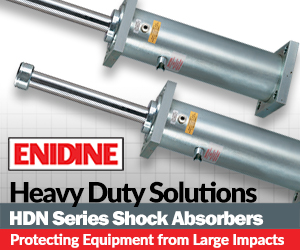Loss Analysis for OEE
Overall Equipment Effectiveness (OEE), the performance measure derived from Total Productive Maintenance has become a de facto standard for measuring equipment efficiency, but the next stage, loss analysis, is less well-known.

OEE, which is now widely used as an industry measure, was developed as part of TPM in the 1970s. In TPM it forms part of the first pillar of TPM, Focused Improvement (Kobetsu Kaizen) and is in essence the Measure in a Define, Measure, Analyse, Improve, Control improvement process (DMAIC). The difference between Kaizen and Kobetsu Kaizen is that Kaizen tends to be reactive – individuals or small groups solving immediate problems, whereas Focused Improvement is proactive – project teams choosing which issues to address based on loss analysis.
The TPM loss structure has developed over the years from the original six losses in three categories of equipment loss, to a sixteen-loss model in an expanded list of categories, including manpower losses and energy and material losses. I have even seen a model produced by a JIPM consultant containing twentythree losses!
For our purposes we can focus on the equipment losses, be it a six, seven or eight loss model. So we have two basic kinds of availability loss – breakdowns and changeovers, two basic kinds of performance loss – speed and minor stops, and two basic kinds of quality loss – scrap and rework, as shown in the tree structure of Figure 1. This foundation can be added to, according to specific company needs.
At this level we can see whether our basic losses are focused on reliability (breakdowns), flexibility (changeovers) or performance or quality issues. Before we go into further analysis however, there is one key principle of TPM that must be followed. A key concept in TPM is forced deterioration – equipment deteriorating because of the way we manage it, both in terms of operation and maintenance. Forced deterioration produces abnormalities, which are a major root cause of many losses, up to 70 percent of breakdowns and performance losses (95 percent in one French survey), so our first action must be to correct these abnormalities and introduce countermeasures against the causes. This is most commonly addressed through the Autonomous Maintenance process.
Thorough implementation of Autonomous Maintenance should improve OEE and alter the overall picture in terms of loss analysis, allowing us to then identify and prioritise remaining losses and set up Focused Improvement projects to address them.
At this level there are two approaches, an equipment model and a priority parts model. In the equipment model we focus on the constraint equipment and produce a Pareto of losses down to the next level. Breakdowns can be split into mechanical, electrical and control for example. Mechanical breakdowns can then be split further into bearings, seals, drive belts and so on. The point of the loss analysis is to identify a specific type of recurring issue that needs to be the focus of our improvement activity. If our major cause of breakdowns is bearing failure, then we need to set up a focused project to examine the causes of bearing failure on that particular machine. This is what we mean by Focused Improvement – looking at particular losses, not just individual breakdowns.
The priority parts model looks at particular common equipment components, such as motors or pumps. Rather than looking at specific constraint equipment we look at the major types of equipment components at a lower level. If, from experience and data, we know that we spend a lot of time repairing pumps, we may take the analysis from breakdowns down to pumps and then to major categories of pump failures – impellers, seals, as shown in the tree diagram of Figure 2. Our data may tell us that across the whole plant a major cause of downtime is pump seal failures, and our focused project would be to examine the causes.
DMAIC helps to proceed
Focused Improvement projects can be managed in a number of ways, but the DMAIC sequence of define, measure, analyse, improve, control is a helpful skeleton for the process. In producing the loss analysis we have defined our loss model, measured the losses and analysed the data prior to setting up the Focused Improvement project. Our next step is to generate some improvement ideas to test and then, if the results are successful, put in some control to maintain the improvement. This control may be a revised operating or maintenance procedure, for example, an operator inspection task.
Creating the initial loss tree structure is a discrete activity to be undertaken at the start of the TPM journey. It should be based on the categories of availability, performance and quality and one of the common loss models of six, seven or eight losses. These loss models can be modified to suit particular production processes or even renamed in companyspecific language. The important point is that there is a common definition of losses, which means something to the business and its employees. At the lower levels in the loss tree, the loss model should be even more companyspecific so that it can lead to meaningful action, whether based on constraint equipment or priority parts.
OEE is a powerful measure of equipment performance which has become an industry standard. Its origin was the starting point for a Focused Improvement process, incorporating loss analysis, and its most powerful use is still as a means of analysing loss at the start of the improvement cycle.












